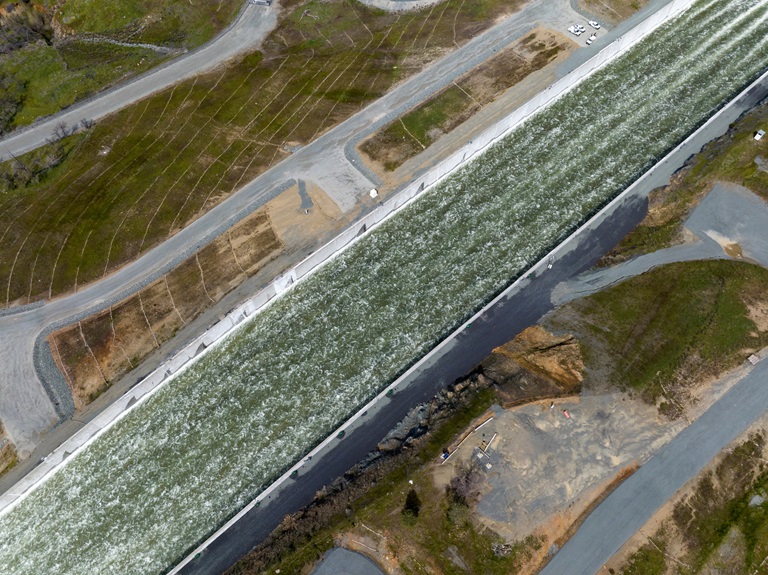Update on Lake Oroville Operations: April 3, 2023
A drone provides an aerial view of the Lake Oroville Main Spillway. Photo taken March 17, 2023.
The Department of Water Resources (DWR) is maintaining releases from Lake Oroville to the Feather River at 10,000 cubic feet per second (cfs), with 1,900 cfs flowing through the low-flow channel within the City of Oroville.
Ongoing releases ensure continued storage space in Lake Oroville for spring runoff from rain and snowmelt and are closely coordinated with the U.S. Army Corps of Engineers and downstream water operators for flood protection. DWR continues to closely monitor lake inflow levels and will adjust releases accordingly.
The information below reflects current reservoir level estimates. Forecasts can change quickly and may affect the estimates provided.
- Current Oroville Reservoir Level: 858 feet elevation
- Current Storage Capacity: 83 percent
- Total Releases to the Feather River: 10,000 cfs
The Lake Oroville reservoir is the largest storage facility in the State Water Project and supports environmental and water delivery needs to 27 million Californians and reduces flood risks to downstream communities. DWR continues to monitor lake levels, weather forecasts, and mountain snow levels to optimize operations for flood control, water storage and environmental protection while allowing for carryover storage into next year.
Future updates will be provided based on operational changes to Lake Oroville releases.
